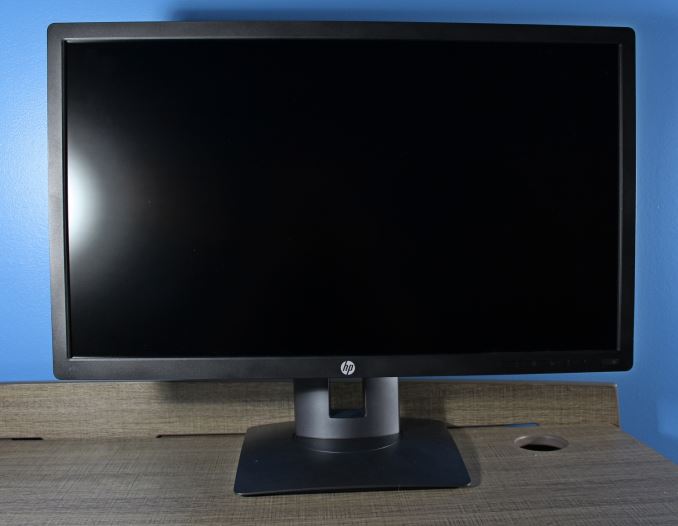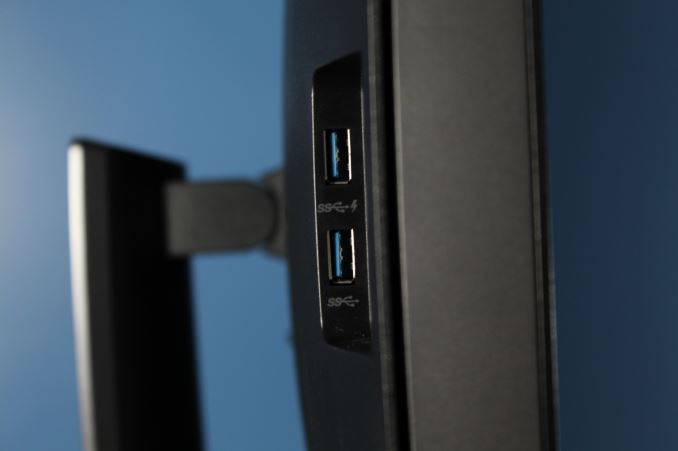HP Z27q Monitor Review: Aiming For More Pixels
by Brett Howse on December 22, 2015 8:00 AM ESTFinal Words
When HP entered the 5K market with the Z27q, the only real competition was the 27-inch Dell 5K display, but it cost close to $2000. HP came into the market with the same display dimensions and resolution, but undercut Dell by almost $800. $1200 for a display is still a lot of money, but if you are someone that needs high resolution, the HP Z27q needs to be considered.
The overall accuracy of the display is great, especially in the AdobeRGB color mode. sRGB does need some calibration of the grayscale and white point to make it practically perfect, but the calibration of the LUT at the factory by HP is quite good resulting in a decent out of the box experience. The one real issue with this display is that the backlight is uneven, dropping as high as 20% from the center when measured at the top left corner. This is pretty much the same issue that we found with the Z27x, and it would not be surprising to find that both monitors are designed similarly. It is the one blemish on an otherwise great performing display.
People looking at 5K displays have to factor in that it takes a lot of GPU power to drive these. You can’t even drive the display with a single cable; instead you have to use two DisplayPort 1.2 ports and cables to achieve the 5120x2880 resolution. This means that the display leverages MST, and while I’ve heard of people having issues with this, I did not have any issues with MST driving this display with an AMD FirePro card in Windows 10. It will still be a while before we have the DisplayPort 1.3 capabilities to drive this with just a single cable.
The construction of the HP Z27q is not going to win any style awards, but it is functional and for most people, a black monitor is all that is needed. The stand is very easy to use though, with lots of options to tilt -5° to +22°, and the swivel is plus or minus 45°.
Due to the nature of the display, input lag was not able to be tested, since the tester used is HDMI and 1080p. In my time with it, there was no noticable lag at the native resolution.
There are not too many people that need almost 15 million pixels, but there are certainly use cases for a display like this. Editing 4K video is an obvious use case, since you can have the entire 4K video in a pixel perfect window, with enough room for toolbars as well. The gamut is a long way from the Z27x offering from HP, but that is only a 2560x1440 panel. Just like the Z27x the one glaring issue is the uniformity. If HP can get on top of this, they will likely have the display to beat, especially at this price.













92 Comments
View All Comments
usernametaken76 - Tuesday, December 22, 2015 - link
It would look like native res 2560x1440. That's not really "pretty damn big" it's more along the lines of "just right."stephenbrooks - Thursday, January 7, 2016 - link
Depends how big someone likes text to be and how far away they prefer their monitor to be. I was given a 2560x1440 27" monitor and chose to run it at 125% scaling, so I guess I'd ask for 250% scaling on the 5K version! (Incidentally, even going from 100% to 125% makes text noticeably smoother)PixyMisa - Tuesday, December 22, 2015 - link
200% is actually about right for a 27" 5K monitor. I haven't tried it with Windows, but that's exactly what my retina iMac does.I have a 4K 28" monitor on my PC at 150%, and 5K is 1.33x the resolution of 4K.
I use 200% scaling on my 15" 4K notebook too (okay, yes, I'm a retina screen junkie) and that looks great, but you sit closer to a notebook screen than you do to a desktop screen.
sharath.naik - Friday, January 1, 2016 - link
5k is actually 1.7x the resolution of 4k. That's nearly twice.PEJUman - Tuesday, December 22, 2015 - link
I went from 1600p 30" to 4k 27" and finally settled on 4K 40", which I feel is the perfect PPI for 100% scaling. Incidentally, the 1600p 30" have very similiar PPI. I think 5K needs to be in the 50" range.I have better than 20-20 vision and still thinks 125-175% scaling is a little wasteful on the overall effective real estate.
bug77 - Tuesday, December 22, 2015 - link
I have yet to see one, but I also have the feeling even 4k is too much for 27".timbotim - Tuesday, December 22, 2015 - link
4k on 27" is -just- OK, works out at 163PPI. I have a 24" 4K which is 183DPI and that is too small; for me anyway, but I'm an old git, so I would imagine it's OK for the younger enthusiasts. But this thing is 215PPI, and I've tried DPI scaling and found it wanting.bug77 - Tuesday, December 22, 2015 - link
Scaling is ok, everyone can set it to their liking (assuming it works). My concern is I'm not going to see pixels without closing in to ~4"/10cm. For pro-photo editing that may be ok, but for me, it's just more work for the video card, work that I won't see anyway.sharath.naik - Tuesday, December 22, 2015 - link
27 inch is the minimum size for 4k resolution (Ideal at 36-40 inch). 5k at 27 inch monitor is like a 4k at 20 inch inch monitor, completely unusable at 1:1 dpi. Minimum size for 5k monitor should be close to 34 inches, if not there is no point in paying this amount for a resolution you cannot use.SolMiester - Tuesday, December 22, 2015 - link
+1.I struggle with my 28"4K, IMO 5K @ 27" is a waste of time and money!